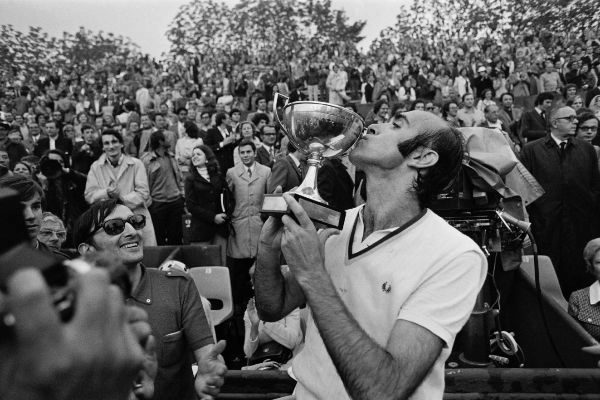- Andrés Gimeno.Campeón de Roland Garros in 1972: the fervor of a pioneer
First it was Santana . And then, Gimeno . First, by titles and general significance, Santana will remain. And then, less for titles, but more for export internationalism in times of intramural existence, Gimeno.
These two last names, to which we incorporate the names of Manolo and Andrés to reinforce them, are inextricably linked to the beginnings of the great Spanish tennis. To his first great international projection in a historical and sociological context not so successful. All of our later champions, including Rafa Nadal , the brightest, are children of Santana and Gimeno.
It is inevitable in Gimeno to return to the word "pioneer" when it comes to placing some of our most important athletes. This characteristic reaches a degree of unusual cosmopolitanism in Barcelona at the time, when the professional circuit of Jack Kramer was the most logical destination of the most outstanding tennis players. Santana, officially amateur, was held by Juan Antonio Samaranch , a strong man of Spanish sport, who got him under a rope for an annual fixed of 50,000 dollars (three million pesetas), the same amount that Kramer offered him, probably the most influential person in The history of world tennis. The man, first player and then promoter, who laid the foundations of the modern organization of tennis. The first president of the ATP when it was created in 1972.
Samaranch knew that Spain, if he wanted to win the Davis Cup, that ideal, that dream, could not afford to do without Santana after losing Gimeno. The Catalan shared professional tours with Rod Laver , Ken Rosewall , Pancho González ... And, indeed, Davis did not play from 1960 to 1968, when the Open Era began. It wasn't in the end of 1965 and 1967. Would Spain have won it with him? Would there have been other endings and other victories? We will never know. But the mere possibility expresses the importance of Gimeno.
Access then to the professionalism and in the company of the best rackets of the circuit, a select group of elected, gave Gimeno an enormous prestige. He was conferred a star halo and an ambassador rank in the best tennis halls. When he won at Roland Garros in 1972 with 34 years and 10 months, we thought: how far would he have gone if he hadn't been professional during his best years?
We will never know that either.
According to the criteria of The Trust Project
Know more- tennis
- Rafael Nadal
- Roland Garros
US OpenRafa Nadal: inexhaustible energy, commitment and maximum conviction
US OpenDjokovic is more dangerous for Nadal than Federer

